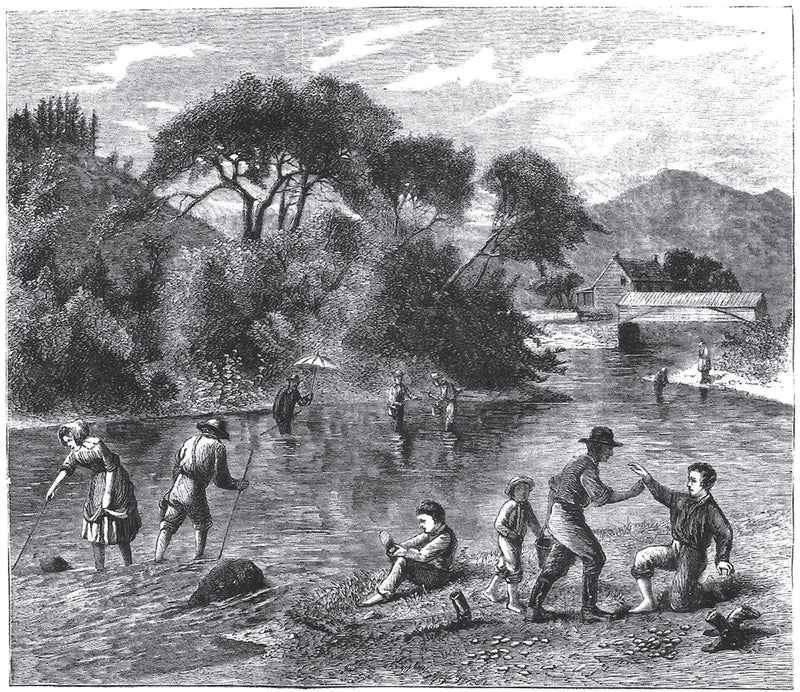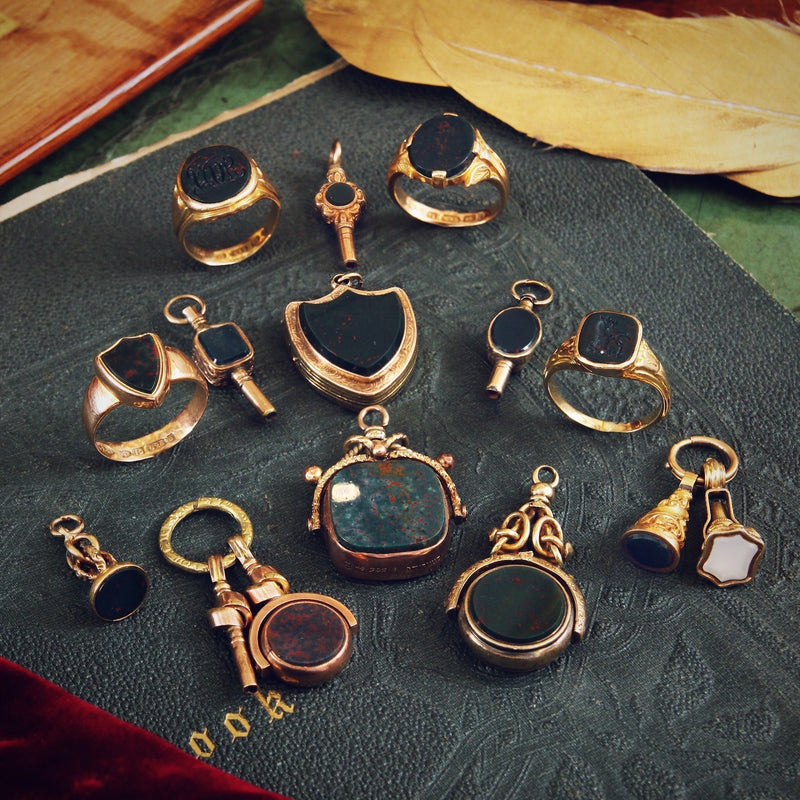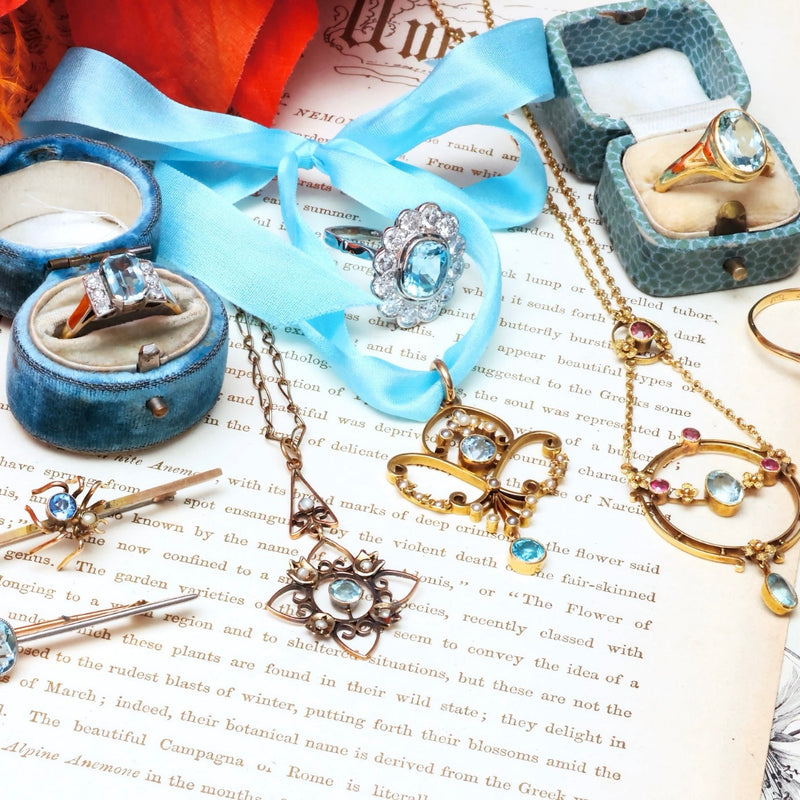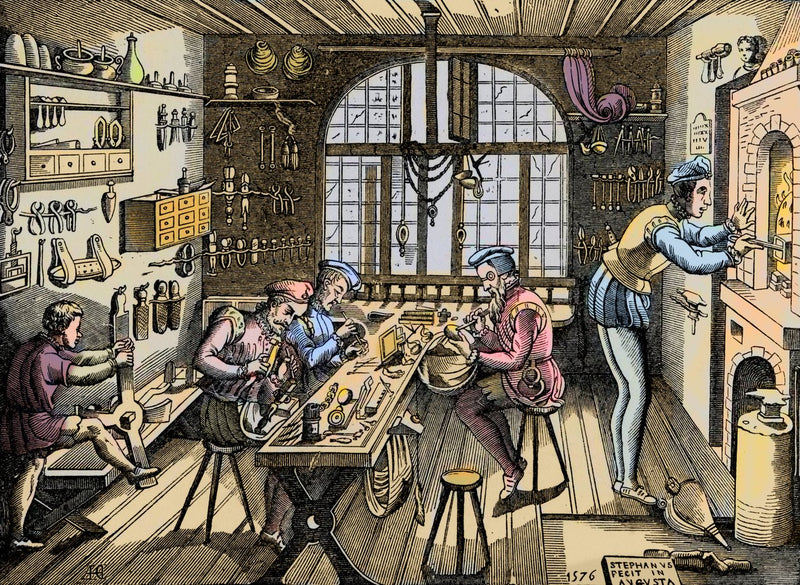
Natural Freshwater Pearls, harvested from the rivers and lakes of North America have been valued for their individuality and beauty for centuries and are of wonderful interest for the collector. The Native Americans were the first to discover freshwater Pearls in the rivers and streams of the Mississippi Delta, Tennessee and Ohio and when they arrived in the New World in the early 16th century, English and French explorers found Native Americans wearing and using Pearls which they valued highly. These freshwater Pearls were found in Mussels native to the river basins of Ohio, Mississippi and Tennessee rivers and their tributaries.

Pearls: A Natural History;
‘Daniel Coxe is quoted as saying in 1722 that he saw many of “a sort of shellfish between a mussel and a Pearl oyster, wherein are found an abundance of Pearls and many of an unusual magnitude” in places visited by Spanish explorers. These Pearls seem to have been a by-product of catching clams for food and most such Pearls were ruined by being broiled over a fire until fit to eat, “the large Pearls they find in them, which by the heat are tarnished and lose their natural lustre”. Despite this the Indians put some value on them, but not so much as the coloured beads we bring them.’
Pearls at that time being the most prized of all gems in Europe (Diamonds had not yet been appreciated as cutting techniques were still primitive) so very many were exported to Europe that the New World became known as the "Land of Pearls."

The freshwater American Pearl mussel or 'clam' in local parlance, Megalonaias Nervosa (commonly known as the Washboard Mussel) requires clean, fast flowing streams and rivers, where it lives partly buried in clean fine gravel and coarse sand, at depths of between 0.5 and 2 metres. Capable of living for up to 130 years, the mussel grows very slowly, and takes 10 to 15 years to reach maturity followed by a reproductive period of about 75 years. Pearls are formed when a parasite inside the shell is coated with nacre excreted by the mussel, and a hundred or so of these long maturing shells could be opened without finding a Pearl.
In the intervening years, with the discovery of Diamonds and Emeralds in Brazil and Opals in Australia, these Pearls were almost forgotten and it was not until the mid 19th century that the existence of commercially viable pearls in the United States was recognised.

George Kunz, in his 1897 treatise on freshwater Pearls notes;
‘One spring afternoon in 1857, David Howell, a Paterson, New Jersey, shoemaker who escaped tedium by fishing, gathered a “mess of mussels” from Notch Brook to fry for dinner. As he plucked the bivalves from the cooking grease, he found a large pearl weighing nearly 400 grains. It became known as “The Queen Pearl” and was sold by Tiffany and Company to the Empress Eugenie of France for $2,500.’

This and other finds spurred widespread exploration of the American river and stream beds. Kunz described the pearl fishing trade as 'a combination of pleasure seekers, fortune hunters, farmers in their off season, women and children, and other tradesman formerly employed in the regular economy, all wading on the river banks, using either no implements, or very basic tools, such as small boats, water telescopes and shoulder rakes.'
The market for the pearls was facilitated by traveling dealers and by the 1880's large scale harvesting had begun, leading on to the beginning of the 1900's, when the Pearl rivers of the Mississippi Delta had become an important source of commercial freshwater Pearls and more beneficial trade connections with New York and even European jewellers had formed. The key to this rapid expansion was the species rich American Pearl mussel fauna, with numerous (up to 300 varieties) of large and thick shelled varieties including the Heel Splitter, Pimpleback, Elephant Ear, Mapleleaf, Pig-Toe, Pistol Grip, etc.

Each can produce a different shape, texture and hue of Pearl, dependent on the particular species and whereabout the Pearl grows within the shell. The shapes are mostly baroque; wing, spike, button, turtleback, slug, haystack, petal and the beautiful colours can range from bluish, pinky, silvery, coppery, dark grey with generally a beautiful high sheen and lustre.
From greatriver.com:
'The shape of a pearl is determined by its location in a shell. Those along the lip are round and are the most valuable. Wing-shaped pearls form along the back of the shell, and irregular pearls form in the heels of shells.

The tones of the freshwater pearls are dictated by the mother shell. White is the most common, followed by pink. Other colors depend on the type of mussels. Big washboard mussels usually have pink pearls, as do the wartybacks. Threeridge mussels have pearls in shades of blue-green and lavender. Muckets produce fine pink pearls, and sand shells have salmon-pink pearls.'
Natural Pearls of any size are in fact a rare find, and so businesses could not be sustained solely on these finds and there was much ‘wastage’ in terms of mussels which were opened and no Pearl found. Around 1887-1891 a further industry grew up in Muscatine, Iowa by a German button maker named John Frederick Boepple, based around cutting the shells of certain species into Mother of Pearl buttons. Working parallel to the original Pearling industry, this in time became the dominant business and supported the Pearl business founded on lucky finds, the mussel ‘meat’ being used as pig swill or fertiliser.

The Pearls were shipped to Europe, in particular Germany, Austria and France, where jewellers of the time revelled and found inspiration in the naturally baroque shapes and the unusual colours of these Pearls. Many of the free-form pearls used in antique Arts & Crafts and Art Nouveau Jewellery pieces are American freshwater river Pearls, that were found in mussels dating from the mid 1800s onward.
Since the odds of finding a perfect round natural pearl are outrageously low (less than 1 in 10,000) and a good sized irregular Pearl perhaps one in a hundred, a tremendous number of mussels is necessary to support both the button industry and the natural Pearl industry, and as time went on, the mussel populations depleted due to such overfishing leading to the dwindling of both industries.

During its heyday, from roughly the 1960s to the 1990s, Tennessee’s commercial mussel shell business employed about 2,000 people and provided nearly $50 million in state revenue, also using the thick shells to create bead nuclei which were then sold to the Japanese cultured Oyster Pearl farmers.
At this time, many of the roughly 300 freshwater mollusc species in North America are at risk due to overharvesting, habitat destruction, with 70 species on the endangered list, there are conservation programmes in place.
Since that time there have been experiments with culturing freshwater mussel Pearls, in particular in 1984 John Latendresse harvested his first crop at Birdsong Creek pearl farm in Camden, Tennessee, but sadly this business couldn’t make a success of culturing these long maturing molluscs and the farm is now a museum.
FURTHER READING:
GIA Freshwater Pearling in Tennessee








